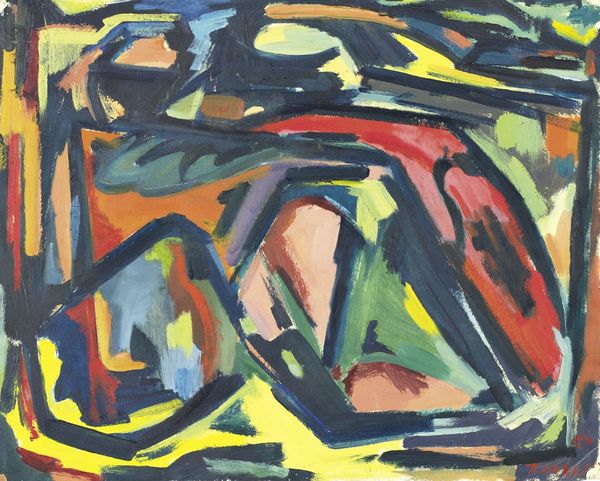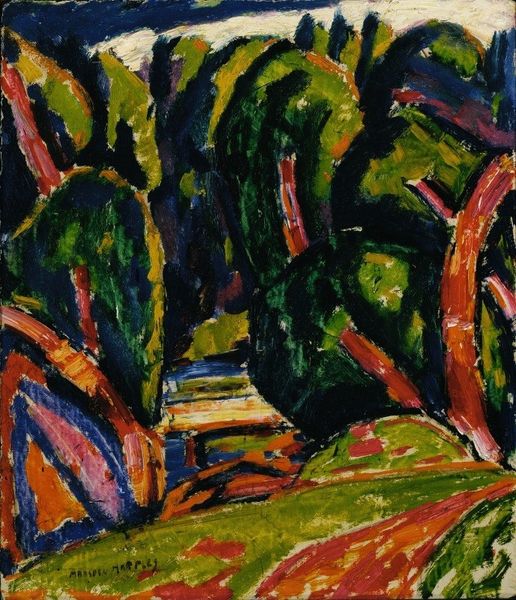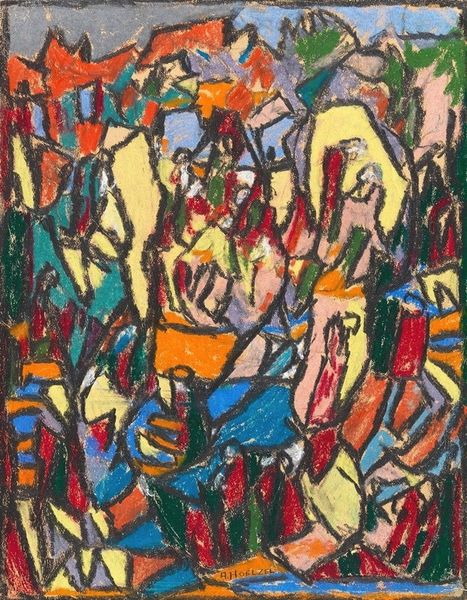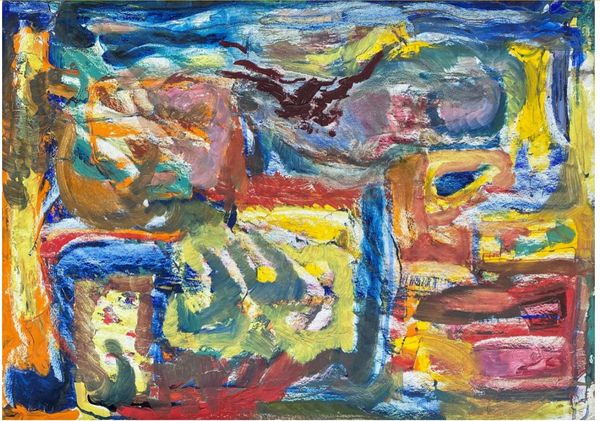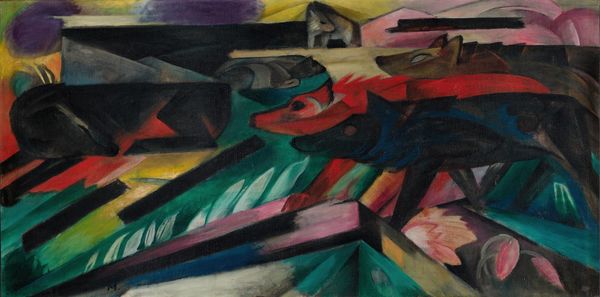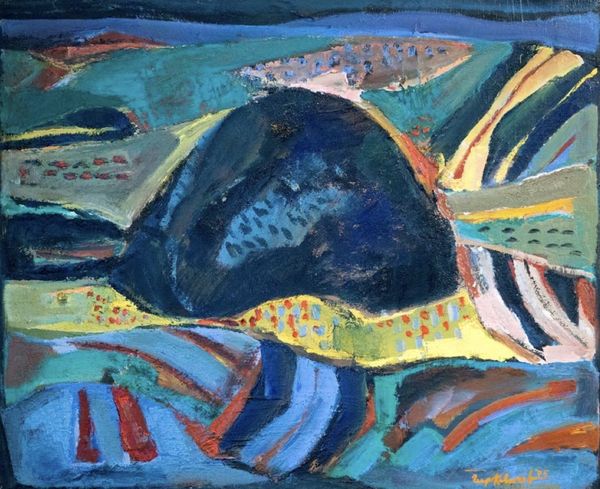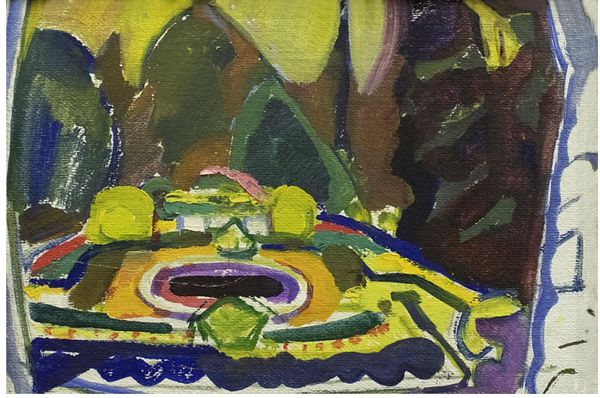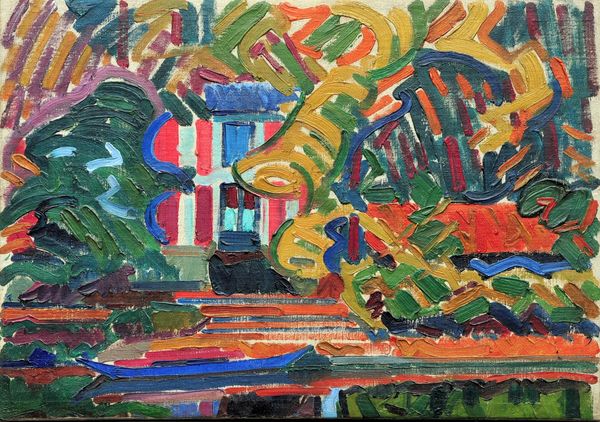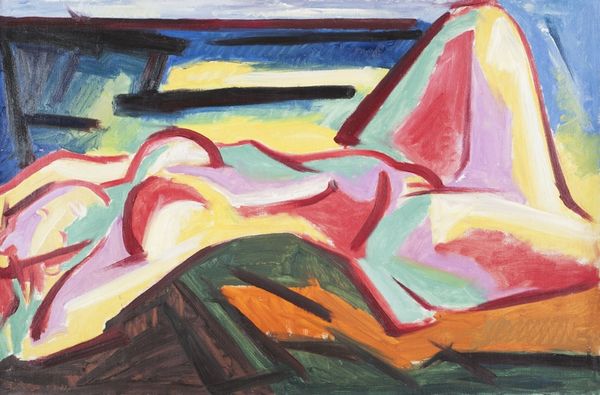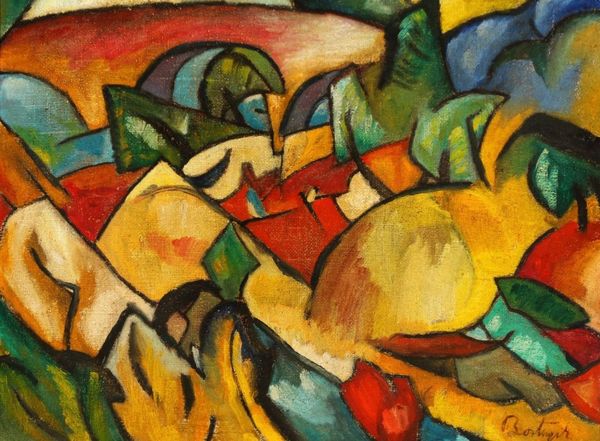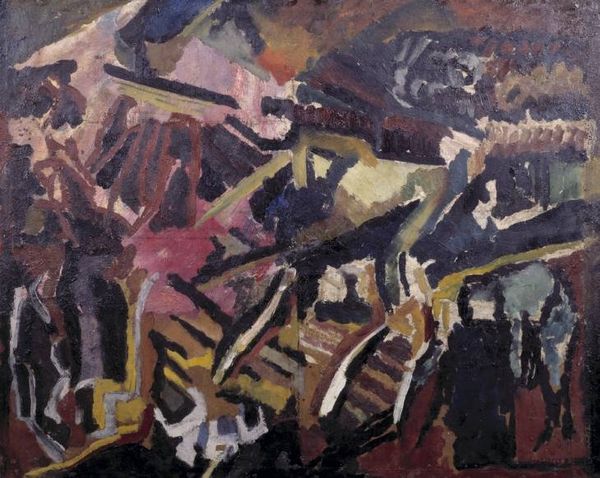
Copyright: Margit Selska,Fair Use
Editor: Here we have Margit Selska's "Underground. Metaphysical Landscape," created in 1960 using acrylic paint. The intense colors and geometric forms make me feel like I'm peering into an alternate reality. How do you interpret this work, particularly given the context of its creation? Curator: Given its creation in 1960, consider the socio-political landscape of the time. Poland, like much of Eastern Europe, was under Soviet influence. How might that context affect artistic expression? Is this “underground” title perhaps a suggestion of an interior world beyond the reach of the state's ideology, expressed through Abstract Expressionism's non-representational visual language? Editor: That's fascinating! It didn’t occur to me to view it as resistance through abstraction. It challenges the visual representation of Soviet art. But if it wasn't officially endorsed, how did a style like this survive and circulate? Curator: The circulation of non-approved art often happened through underground networks, private studios, and exhibitions organized outside official channels. Think of these as counter-institutions. What visual elements do you think contributed to this "underground" feel, perhaps suggesting something hidden or forbidden? Editor: Maybe the dark colors contrasting with the vivid yellows and reds? The landscape feels both inviting and dangerous, full of obscured shapes. I’m also struck by how "unfinished" it appears in some areas; could that imply a deliberate subversion of traditional artistic expectations? Curator: Precisely! Selska challenges those expectations. This aesthetic might be understood as rejecting the clean lines and easily digestible messages often favored by socialist realism, prompting viewers toward critical reflection, toward deeper probing of our collective "Underground". It represents both a physical and ideological resistance against the dominant political structure of the era. Editor: It's really opened my eyes to the way an abstract landscape can carry complex political weight. Thank you. Curator: Indeed. It highlights the potent intersection of personal vision and social critique in art history.
Comments
No comments
Be the first to comment and join the conversation on the ultimate creative platform.
